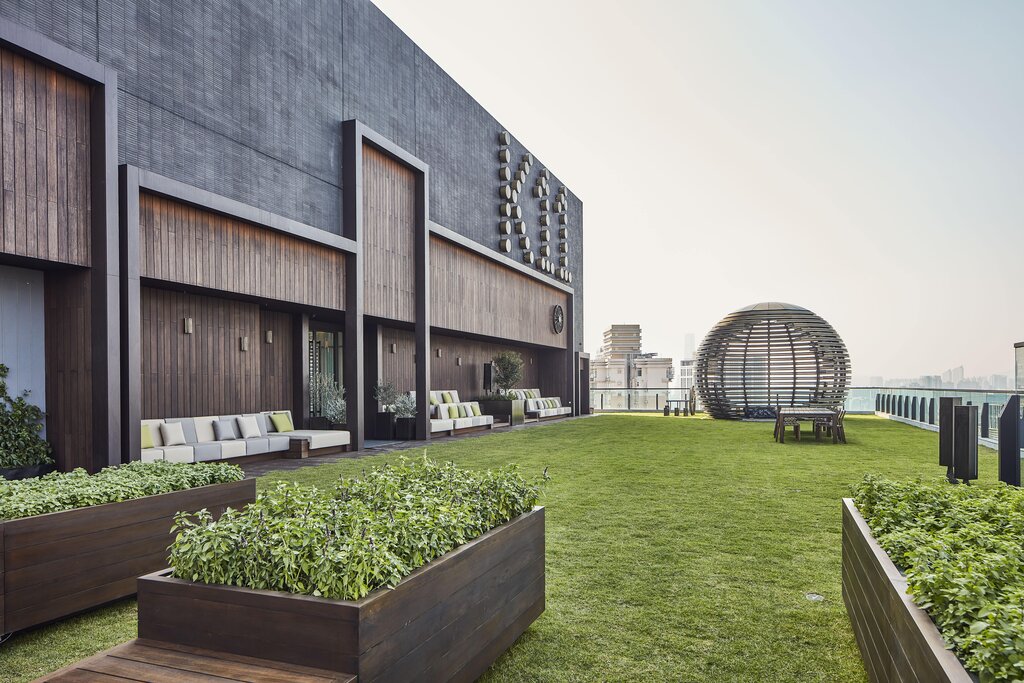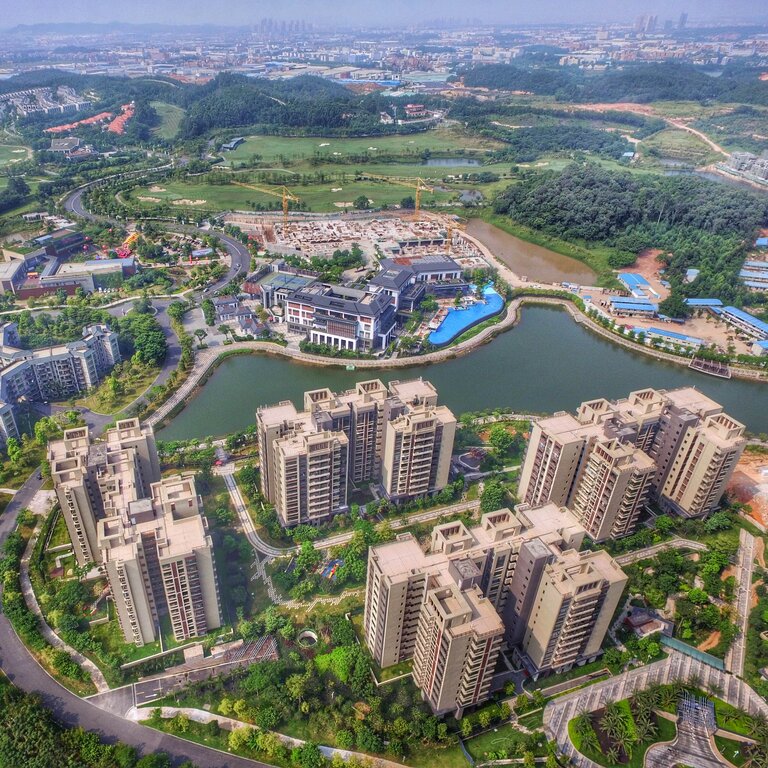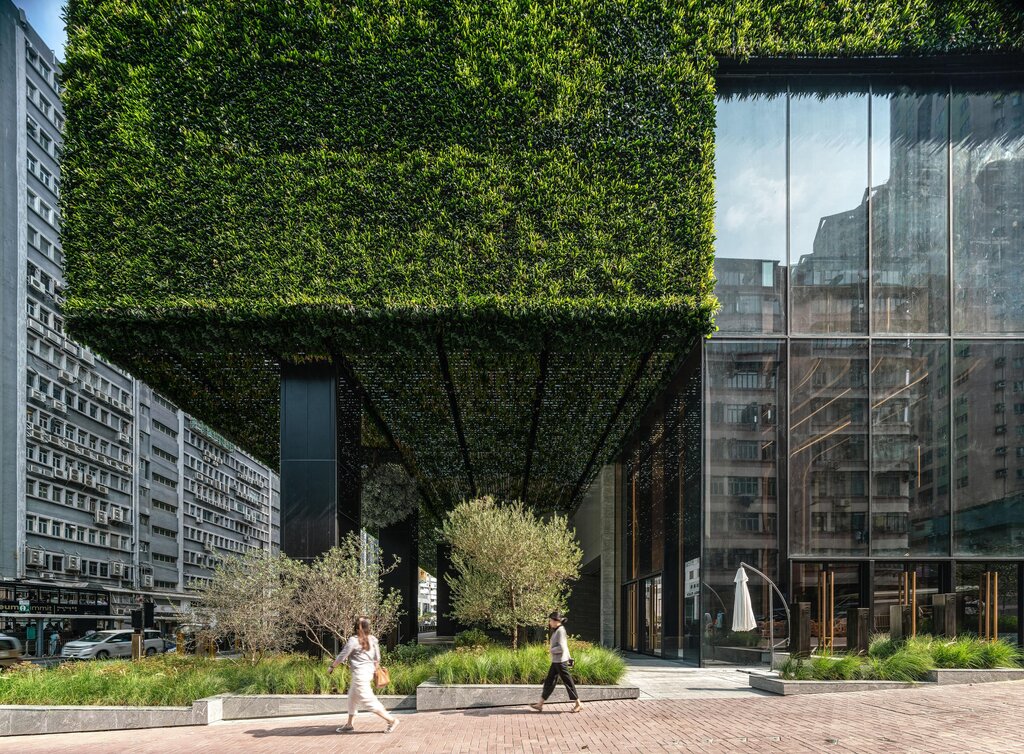ReThink Hong Kong, a one-of-a-kind two-day business conference centered around sustainable economy, society and environment, will be hosting its second edition on October 5-6 at the HKCEC. Speakers and panelists will be sharing their valuable insights, solutions and strategies in sustainability including the future of green building and how we standardise sustainable architecture in Hong Kong.
—
Earth.Org spoke with Ellie Tang, Head of Sustainability at New World Development (NWD) and K11 Concepts, ahead of her panel at ReThink on green building, sustainable development and paving a sustainable future for Hong Kong conglomerates.
What are the Sustainability Targets for New World Development and Why Is It Important to Set Them Out?
New World Development (NWD) has an origin as a family business over 50 years ago. There’s a desire to think long term and make sure the company will be run properly in the next many decades to come. Sustainability is basically in the corporate DNA, and we do want the company to thrive in the long term whether it’s caring for the environment, making business plans that resonate with the community or having proper governance practices to ensure sustainability is considered and well managed.
We came up with the New World Sustainability Vision 2030 and four key pillars, they are: Green, Wellness, Smart and Caring. These form the basis for our vision and are considered when we plan and develop new products and services, or enhance our existing ones. These pillars have specific targets, such as the commitment to reduce our carbon intensity by 50% by 2030 based on 2013 levels. This covers many businesses from property to retail to infrastructure. For building and construction businesses under NWD, we have committed to setting Science Based Targets to decarbonise under the 1.5 degree Celsius scenario by 2030 and are striving to achieve net zero carbon by 2050.
We have standardised how we look at our life cycle building approaches, from seeking different new building certifications, adopting carbon, waste and water reduction targets during the operational stage, to engaging suppliers and tenants to reduce their emissions.

What are Some Key Strategies in Green Building and Sustainable Architecture?
One of the main strategies is standardising sustainable practices in property development. Take K11 ATELIER King’s Road, for example, one of our latest projects. The design offers more than 70 sustainable building features, including Asia’s largest photovoltaic solar and thermal hybrid renewable system on the rooftop.
We also want to promote diversity at the workplace. On every single office floor is a nursing room for working mothers. For the F&B tenants that we have, we collect their food waste for composting on site. There are different measures during the designs and operational stages to showcase how we’re going above market norms and taking inspiration design certifications to really enhance the way we manage buildings.
It’s also our goal to look out for climate risks. We plan to put in place many resilience measures, be it hardware upgrades, frequent building inspections or emergency planning. As we’re constructing new buildings, we are enhancing designs and considering extreme weather events and the risks they would pose on our projects.
You might also like: ‘Sponge Cities’ Could Be The Answer to China’s Impending Water Crisis
The Sponge City Concept Has Been Increasingly Popular in Countries like China. How is NWD Working to Incorporate That?
In the Greater Bay Area, there are reports showing climate risk will become more frequent. Even Hong Kong has experienced more frequent and intense typhoons. Floods and extreme winds will be the norm going forward. 10 years ago, we developed a mixed use project that’s predominantly residential called Canton First Estate using a lot of Sponge City design measures, varying from using more permeable and water-absorbent paving materials – which helps prevent clogging or flooding on the surface – to rainwater harvesting and wastewater recycling. We’re also creating retention ponds so in case flash floods or rain storms happen, we can alleviate the pressure on municipal water systems.

What are the Biggest Challenges in Green Building and Achieving Your Sustainable Goals?
For our building and construction subset, we are committed to making science-based targets, which I see to be a real challenge because science-based targets require committed companies to not only reduce their operational emissions but also their supplies. This means our scope has to be broader and there have to be a lot more measures including contractual change and engagement of suppliers, transference of knowledge, and technical upgrades to monitor supplier performances. It’s a mixed bag of technical and engagement needs in order to decarbonise at Paris Climate Agreement- desired levels.
What are Some Lessons You’ve Learned Along The Way?
I would say it’s the impact and effectiveness of small changes, even if they’re not necessarily easier to make. People used to think only major changes like retrofitting or upgrading to newer large equipment like energy efficient air conditioners could save energy. While these measures are still able to generate significant energy savings, small changes like installing sensors and changing operational schedules will add up to big savings as well. A lot of times, it’s a communication issue, not a tech issue.
How Do Events like ReThink Help Reach Your Sustainability Goals?
Climate change is intensifying by the minute as we see it, and there’s a need to decarbonise more significantly and even faster. The challenges of achieving it will only go up, which means we really don’t have that much time to slowly raise our awareness, figuring out the technical ways and the communication gaps. We have to do all of those at once. ReThink would be a good platform to put everyone together and discuss up and downstream challenges and how everyone along the chain can work on the same issues together.

















